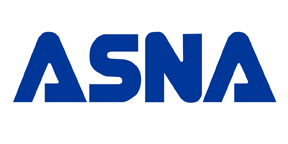A business doesn't get to be nearly 100 years old without doing many things right. Labatt Food Services of San Antonio has clearly been doing many things right--for 94 years. Once a small family-run wholesale grocery, Labatt has grown into one of America's fastest-growing food service distributors. Today, with sales in the hundreds of millions of dollars and more technology than NASA, Labatt Food Services still holds dear many of the basic tenets of business learned all those years ago.
In this day when virtually everything is a commodity, Labatt makes it a point to focus on being the "home of the best" in the food service industry. Labatt promises its customers the most professional representatives and the highest quality products--all delivered with the most innovative technology services. At Labatt, though, technology must answer for itself. It's not enough to use innovative technology just for the sake of using new and exciting things: Labatt demands that its technologies further empower the organization to continually improve customer service. Anything that doesn't deliver is replaced with something that does. Two technologies that have delivered for Labatt are the AS/400 and ASNA's Visual RPG for .NET. Labatt has used ASNA's AS/400 technologies for years to connect Visual Basic (VB) to its AS/400s. Long a user of ASNA's COM-based products, Labatt recently used ASNA's Visual RPG for .NET to build an Internet-based application for its salespeople to use.
The Road to Visual RPG for .NET
Labatt has been an iSeries shop for many years. While many technologies have come and gone, Labatt analyst Bill Neely says the iSeries will be a constant for many years to come. "We long ago invested in the AS/400 as the backbone of our core information technologies," says Neely. "The iSeries has been 100% reliable and scalable for us. We don't see anything taking its place for a long time."
But despite high confidence in the iSeries, Labatt has been frustrated with the tools IBM makes available for getting iSeries data to and from the Internet. After dabbling with several technologies (from both IBM and others), a couple of years ago the Labatt team chose ASNA's DataGate Component Suite (DCS) to connect Visual Basic to its AS/400s.
At the time, Neely and the IT team evaluated ASNA's COM version of Visual RPG (AVR) but considered it a little too proprietary for their tastes. Neely explains, "Although we were impressed with AVR several years ago, several members of our team were pretty heavily invested in Microsoft's VB, and the move to AVR, primarily because of its unique integrated development environment, was too much for us. We didn't want to have to jump back and forth between the very different VB and AVR development environments. However, we were very impressed with ASNA's iSeries database access technology, so we used ASNA's DataGate Component Suite with VB to build some early Web-based solutions. DCS gave us the speed and reliability we needed to get our AS/400 data to and from our Internet-based applications and it did so with a very low learning curve."
Application development proceeded in this arena unchanged at Labatt for several years. With ASNA's announcement last fall of Visual RPG for .NET, Neely and the team at Labatt thought maybe Visual RPG deserved a second look. Explains Neely, "We had been prototyping a few applications with .NET's ASP.NET Web development model with Visual Basic. We did a few projects using VB.NET with ASNA's COM-based DCS, but we really wanted to build 100% .NET solutions. .NET's tightly integrated Web debugging, better deployment, and its vastly improved overall Web development model really impressed us. Although we'd stuck with VB before, we did so in large part because of AVR's proprietary development environment. ASNA's Visual RPG for .NET snaps right into Visual Studio.NET, meaning all that we'd learned with VB.NET transferred directly over to AVR for .NET."
The Time Is Right
With the desire firmly in place to give AVR for .NET a try, several of Labatt's IT staff took ASNA's five-day intermediate AVR for .NET course. Some of these programmers were VB-oriented coders and some were RPG-oriented coders. Both noticed right off that AVR for .NET provided lots of common ground for the two camps. The acid test was yet to come: Could the two camps take back a few rudimentary skills and quickly get the entire team productive with AVR for .NET?
In very short order, that did indeed prove to be the case. Says Neely, "Our team really took to AVR for .NET quickly. Its tight integration with Visual Studio.NET and the natural way it dovetails RPG into the .NET framework made for a very low learning curve. Within three days, the team had a working prototype of a Web-based sales reporting application. In less than a week, the team had the first sales reporting Web app deployed. Out of the gate, and clearly without a lot of AVR for .NET experience, we saw a 50% improvement in our programmer productivity with just this first application."
To say the least, Neely and the entire Labatt team were won over with AVR for .NET.
With initial success under their belt, the team's current initiative is to move all iSeries Web development to AVR for .NET. Legacy ASP/COM Web apps will likely persist for a long time, but all new development will be done with AVR for .NET. Shortly after deploying their first Web AVR for .NET Web app, the team turned its attention to building a much-needed delivery status application.
Explains Neely, "Prior to the deployment of our latest AVR for .NET delivery status app, our in-the-field salespeople worked for days to prepare end-of-month delivery status reports. These tasks were not only time consuming, but they were done with Excel, and there was lots of work overlap and the potential for error. Now, with the AVR for .NET delivery status app, our salespeople see in five seconds what literally took them days to reproduce. Using AVR for .NET was certainly one of the reasons this app was so successful so quickly, but our staff deserves a lot of the credit, too. They worked very hard to quickly master both .NET and AVR for .NET. AVR for .NET is a very good fit for our hybrid VB and RPG programming team."
Coupling Labatt's first-class programming team with AVR for .NET is an unbeatable combo for Labatt. ASNA Visual RPG for .NET helps make it easy for the Labatt IT team to deliver on the original Labatt tenet of "home of the best."
Roger Pence is ASNA's education director. Prior to joining ASNA four years ago, Roger worked for many years as a journalist, speaker, and technical editor in the AS/400 community.

ASNA
9901 West IH-10, Suite 1000
San Antonio, TX 78230
U.S.A. 800.289.2762
Europe +44 (0) 1483 570666
Email:
Web: www.asna.com












 Business users want new applications now. Market and regulatory pressures require faster application updates and delivery into production. Your IBM i developers may be approaching retirement, and you see no sure way to fill their positions with experienced developers. In addition, you may be caught between maintaining your existing applications and the uncertainty of moving to something new.
Business users want new applications now. Market and regulatory pressures require faster application updates and delivery into production. Your IBM i developers may be approaching retirement, and you see no sure way to fill their positions with experienced developers. In addition, you may be caught between maintaining your existing applications and the uncertainty of moving to something new. IT managers hoping to find new IBM i talent are discovering that the pool of experienced RPG programmers and operators or administrators with intimate knowledge of the operating system and the applications that run on it is small. This begs the question: How will you manage the platform that supports such a big part of your business? This guide offers strategies and software suggestions to help you plan IT staffing and resources and smooth the transition after your AS/400 talent retires. Read on to learn:
IT managers hoping to find new IBM i talent are discovering that the pool of experienced RPG programmers and operators or administrators with intimate knowledge of the operating system and the applications that run on it is small. This begs the question: How will you manage the platform that supports such a big part of your business? This guide offers strategies and software suggestions to help you plan IT staffing and resources and smooth the transition after your AS/400 talent retires. Read on to learn:
LATEST COMMENTS
MC Press Online